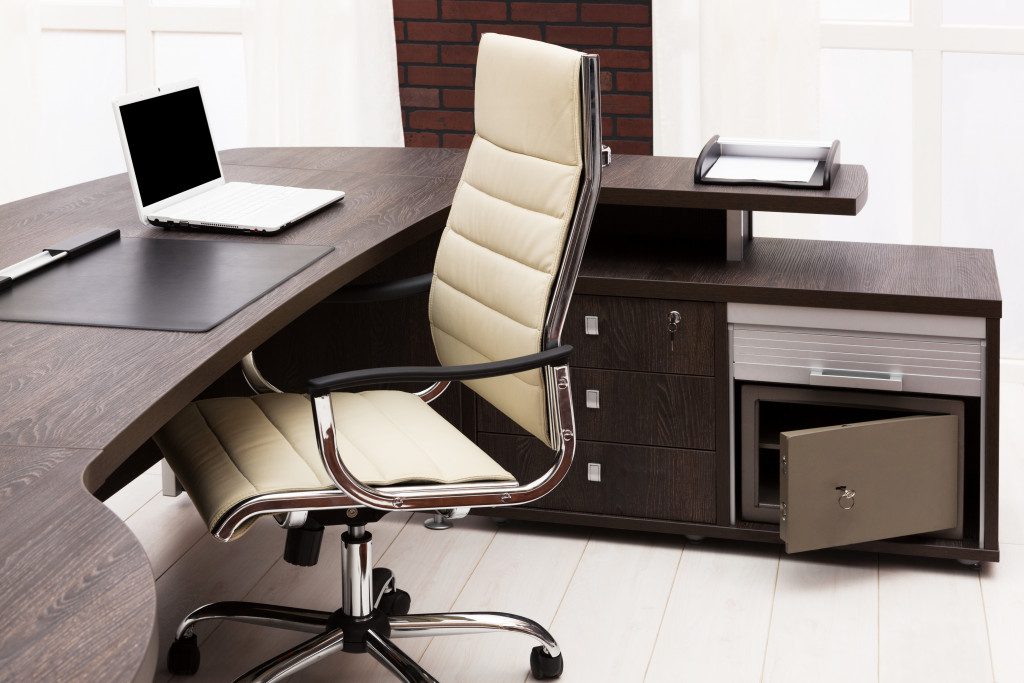Any company always strives to get their employees as much productivity as possible. And it’s no surprise why. Time is of the essence in the corporate world, and if you can get any extra production per day, it will add to significant progress. A common mistake most companies make is piling pressure on their employees by setting close to impossible quotas or deadlines, which aren’t effective and unsustainable as time goes on. It can even force workers to leave. And if many of them do, it can hurt your company’s reputation.
A vital part of ensuring that your employees can become as productive as they can be is providing the tools to help them complete their tasks. And these aren’t limited to just hardware and software. Remember, your employees are people and not machines. They need to feel comfortable in their workplace to function their best. If anything brings discomfort to them during working hours, it will distract them and lower their productivity. That’s why your office’s design is crucial in ensuring a high level of productivity.
Here are some design considerations you should look into when designing your office for employee productivity:
Allot Adequate Space For Movement
Your office should have enough room for your employees to move around. And the design of the space should also encourage movement. Moving around has many health benefits, and it helps blood circulate better. When your employees have enough space to move, they won’t feel cramped, allowing them to think better.
There should also be rooms available for collaboration. It’s perfect for teams to work on projects and provides an option for employees who prefer to work in groups. It should be comfortable and spacious enough for everyone to sit, stand, and move freely. Conversely, there should also be spaces for people to work in private. These are for those who work better and are more focused when completing tasks alone.
Improve Indoor Air Quality
The quality of indoor air has a significant impact on people’s health. And it can also affect productivity. Poor air quality can cause headaches, eye irritation, and fatigue. In worse cases, it can lead to respiratory problems. If employees have to worry about these issues in the air they breathe, they’ll have more to worry about instead of focusing on their tasks at work.
To ensure that the air inside your office is fresh and clean, you should regularly change your air filters and ventilate the space. You can also bring in plants that help improve indoor air quality. There is also the option of using mechanical solutions like air purifiers and circulators if your office doesn’t have operable windows.

Comfortable and Ergonomic Office Furniture
Office furnishings are a vital part of an office’s design. They should be comfortable and ergonomic to ensure the health of your employees. If they’re not, it can lead to body pains that will distract them from their work.
It would be best to consider the height of tables and chairs, the depth and width of desks, and monitor placement. These can affect how easy or difficult it is for your employees to reach the things they need throughout the day. If possible, choose furniture that is adjustable so that it can fit any sized person.
The materials used are also vital in selecting your office furnishings as some may cause skin irritation or produce harmful fumes. Try to source your furniture from reputable brands that use safe and high-quality materials.
Use Productive Colors
There’s a science to the colors you use in interior spaces. In color theory, specific colors can affect people’s moods and behavior. And as mentioned, your employees’ mood and behavior can affect their productivity.
While you can use many color schemes for your office, cool colors are more productive. They include shades of blue, green, and purple. These colors have a calming effect that helps people focus on their work. You can also use small doses of warmer colors like red, orange, and yellow as they can help increase energy levels and stimulate the mind.
But aside from the psychological effects of colors, you should also consider how much light each color reflects. Lighter colors reflect more light than darker ones, making spaces appear brighter and more significant. If you want to make your office look more spacious, using lighter colors can help.
On the other hand, if you want to create a cozier space, using darker colors can do the trick. Remember to use them sparingly, as too much can make a room feel smaller and cramped. And it can also become too cozy, which is unsuitable for employee productivity.
Optimize Lighting
The lighting in your office can also affect employee productivity. If it’s too bright or dim, it can be distracting and stressful for your employees, affecting their focus and concentration. The proper lighting, on the other hand, can help improve moods and increase alertness.
To get the lighting right in your office, you should consider the type of light bulbs you use, the placement of light fixtures, and the intensity of the light. You can also use natural light to your advantage by positioning desks near windows.
Consider these factors when designing your office space to ensure that it’s conducive to employee productivity. And if you need help with the design and implementation, don’t hesitate to seek professional assistance.


